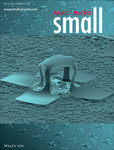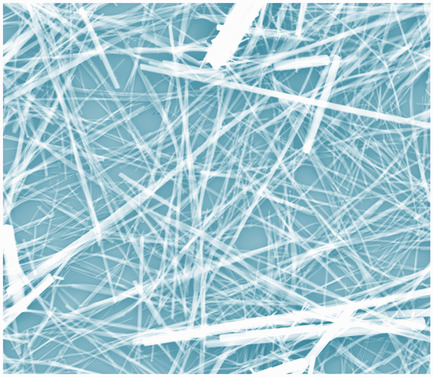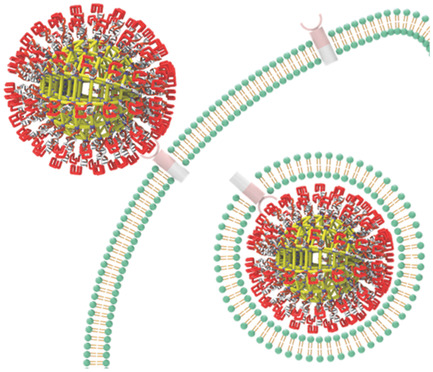Journal list menu
Export Citations
Download PDFs
Cover Picture
3D Mesostructures: Fabrication and Deformation of 3D Multilayered Kirigami Microstructures (Small 11/2018)
- First Published: 15 March 2018
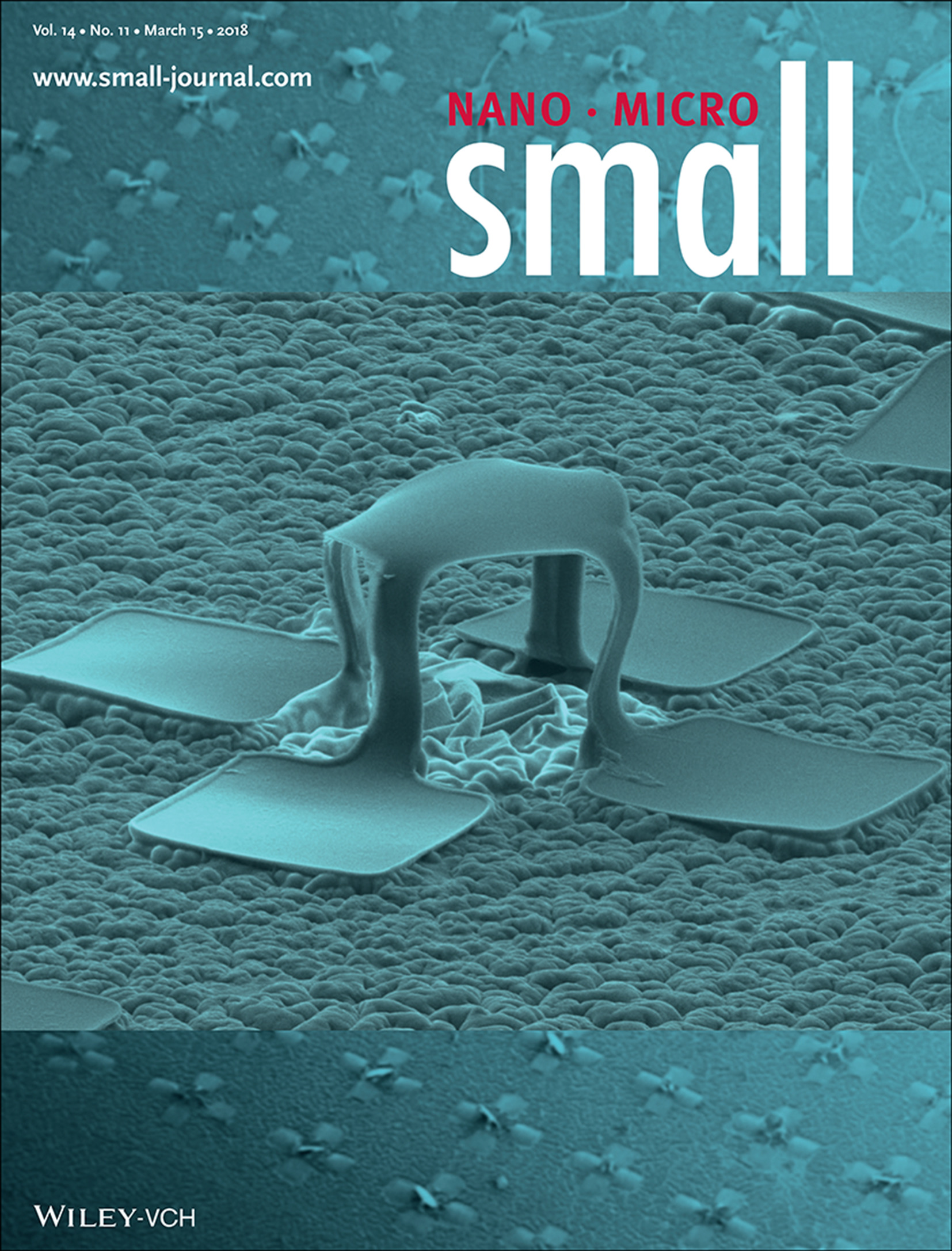
In article number 1703852, Andreas A. Polycarpou and co-workers fabricate and study the deformation of three-dimensional (3D) multilayered Kirigami microstructures with potential applications in 3D microelectromechanical systems (MEMS) devices. The mechanical response under flat-punch compression is studied using combined experiments and finite element analyses. The findings reveal different geometry-dependent deformation for the structures.
Inside Front Cover
Photoacoustic Imaging: A Single Composition Architecture-Based Nanoprobe for Ratiometric Photoacoustic Imaging of Glutathione (GSH) in Living Mice (Small 11/2018)
- First Published: 15 March 2018
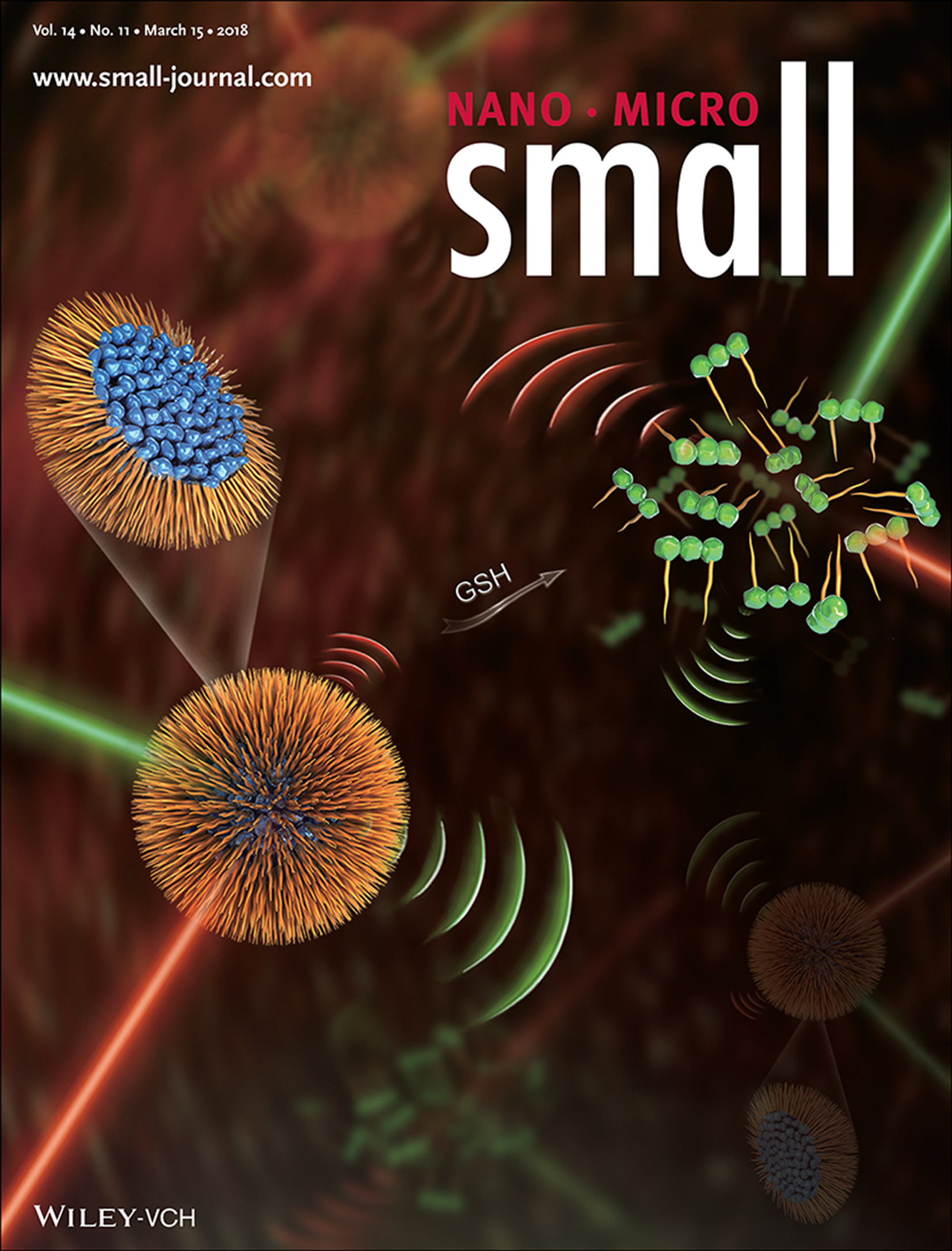
In article number 1703400, Quli Fan and co-workers develop a cyanine derivative-based nanoprobe with specific GSH sensing capability by taking advantage of the single composition architecture design, which permits noninvasive real-time ratiometric photoacoustic imaging of GSH in the tumors of living mice.
Back Cover
Piezo-Phototronic Effect: Regulation of Charge Carrier Dynamics in ZnO Microarchitecture-Based UV/Visible Photodetector via Photonic-Strain Induced Effects (Small 11/2018)
- First Published: 15 March 2018
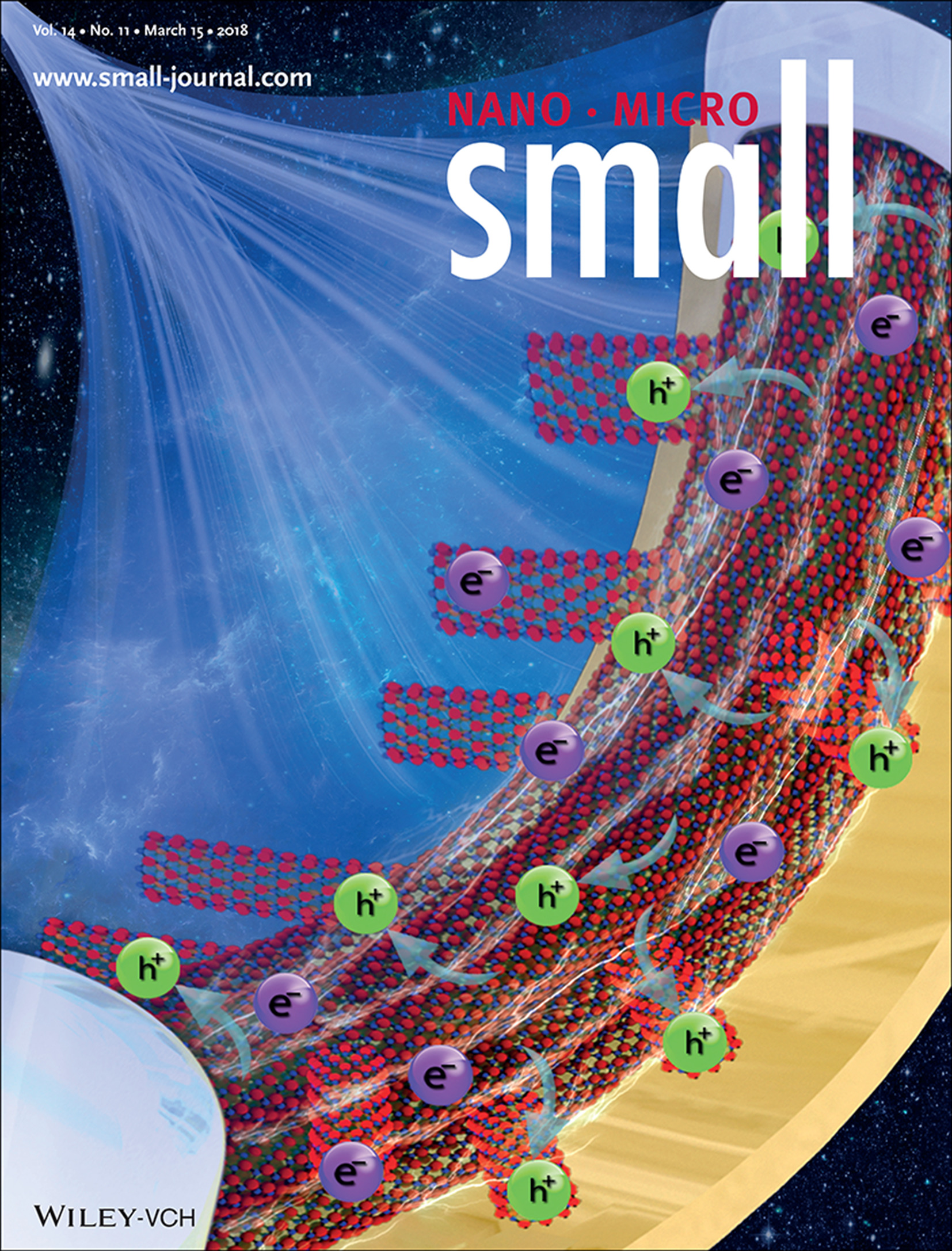
In article number 1703044, Sang-Jae Kim and co-workers demonstrate a flexible ZnO photodetector based on unique microarchitectural influences (e.g., microwire, coral-like microstrip, and fibril-like clustered microwire). The photodetector has the capability to detect the broadband spectrum in the UV/visible range. The behavior of the electrical transport characteristics is determined through conceptual realization of the external strain induced piezo-phototronic effect. This work paves the way for the development of next generation self-powered optoelectronic integrated devices and switches.
Masthead
Reviews
Design Principles of Functional Polymer Separators for High-Energy, Metal-Based Batteries
- First Published: 27 December 2017
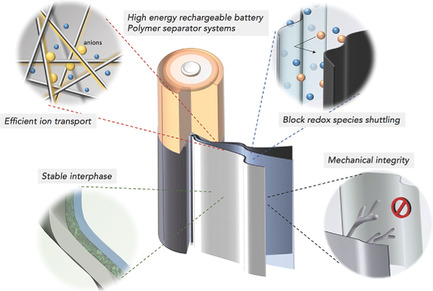
This Review focuses on the new concept of polymer-based battery separators designed for high energy rechargeable batteries. The rational design of novel battery separators with multiple functions highlights the vision to consider separators as active components in battery systems rather than inert barriers.
Concepts
Mechano-Based Transductive Sensing for Wearable Healthcare
- First Published: 23 January 2018
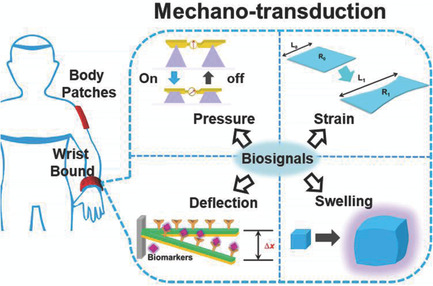
Mechano-based transduction of biological signals has become an important route for wearable healthcare. This Concept provides an overview of recent advances, critical challenges, future development of pressure, strain, deflection, and swelling transductive principles for wearable healthcare devices. Special attention is paid to monitoring biophysical signals via pressure and strain sensors, and biochemical signals via microfluidic pressure, microcantilever, and photonic crystal sensors.
Communications
A Single Composition Architecture-Based Nanoprobe for Ratiometric Photoacoustic Imaging of Glutathione (GSH) in Living Mice
- First Published: 10 January 2018
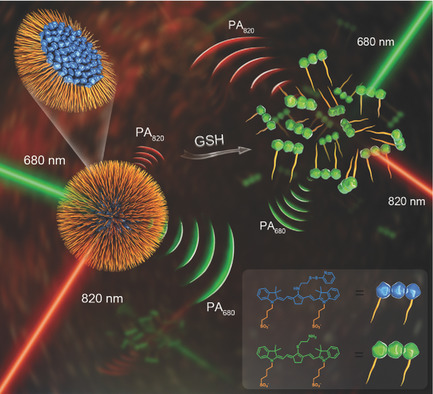
A cyanine derivative-based nanoprobe with specific glutathione (GSH) sensing capability is developed by taking advantage of the single composition architecture design, which effectively overcomes the dissociation-induced issues such as changed optical properties and unreliable imaging results compared with the multicomposition architecture-based nanoprobe fabricated from nanoprecipitation. This nanoprobe permits noninvasive real-time ratiometric photoacoustic imaging of GSH in tumor in living mice.
Fabrication and Deformation of 3D Multilayered Kirigami Microstructures
- First Published: 29 January 2018
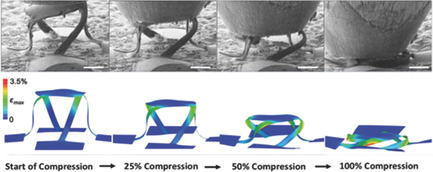
3D multilayered kirigami microstructures are mechanically driven using compressive buckling of 2D precursor patterns, consisting of multilayer thin membranes. In situ scanning electron microscopy flat punch compression reveals high flexibility and recoverability of about 100% height compression. The deformation modes are observed to be geometry-dependent. Computational modeling supports the experimental results, and provides insights on the stress/strain induced on each layer.
Functional Differentiation of Three Pores for Effective Sulfur Confinement in Li–S Battery
- First Published: 22 January 2018
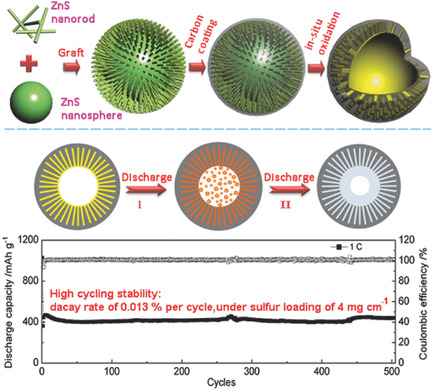
A rambutan-shaped microporous carbon-coated sulfur composite is synthesized from the self-assembled ZnS precursor, through the in situ oxidation process. The functions of the three pores in the unique framework are divided and singularized, macropores for accommodation, mesopores for storage, and micropores for blockage. The excellent cycling stability is exactly originated from the functional separation and cooperation of the three pores.
Ultrasmall Pb:Ag2S Quantum Dots with Uniform Particle Size and Bright Tunable Fluorescence in the NIR-II Window
- First Published: 29 January 2018
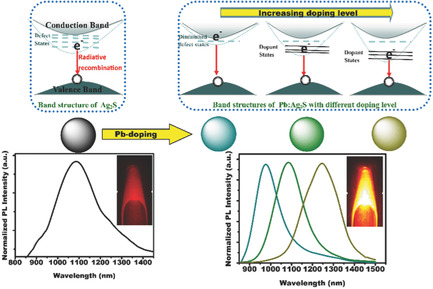
Both the crystal structure and optical properties of narrow bandgap semiconductor Ag2S QDs have a revolutionary change upon the doping of transition metal Pb2+ ions. The ultrasmall size (≈2.7–2.8 nm), bright tunable emission (975–1242 nm), excellent stability and decent biocompatibility of the Pb-doped Ag2S QDs render this material a promising application prospect in in vivo fluorescence-based imaging.
A Transformable Chimeric Peptide for Cell Encapsulation to Overcome Multidrug Resistance
- First Published: 11 January 2018
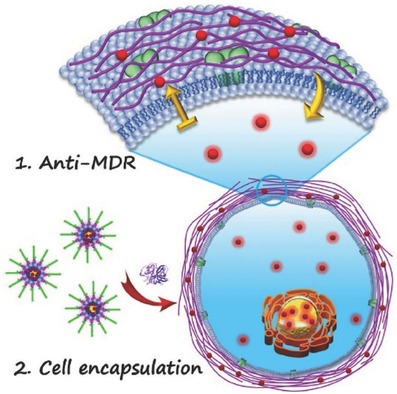
A transformable chimeric peptide (C16-K(TPE)-GGGH-GFLGK-PEG8, denoted as CTGP) with cell-encapsulation properties is designed to deliver doxorubicin (DOX) into tumor regions, for restricting DOX efflux, and overcoming multidrug resistance. After cleaving by tumor pericellular hypersecreted cathepsin B, CTGP@DOX can transform into dense nanofibers, which adhere firmly to cell membrane to encapsulate cells, restrict DOX efflux, and reverse tumor multidrug resistance.
Electrocatalytic N-Doped Graphitic Nanofiber – Metal/Metal Oxide Nanoparticle Composites
- First Published: 22 January 2018
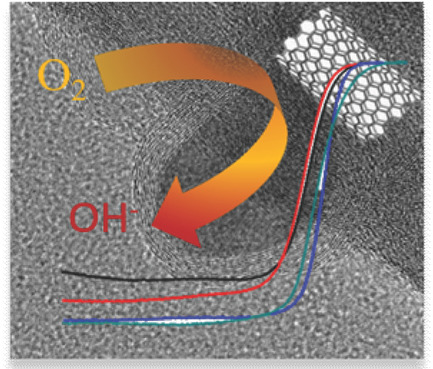
A general approach is reported to produce 1D porous nitrogen-doped graphitic carbon fibers (N-GCFs) with embedded metal/metal oxides. Metal nanoparticles nucleate within the electrospun polymer fibers and subsequently catalyze their graphitization. Benefited from the synergistic effects from electrocatalytic-active Co3O4 and robust nanocarbon structures, the Co3O4@N-GCFs exhibit comparable ORR catalytic activity but superior stability and methanol tolerance versus Pt/C.
Carbon Dioxide Promotes Dehydrogenation in the Equimolar C2H2-CO2 Reaction to Synthesize Carbon Nanotubes
- First Published: 16 January 2018

The equimolar C2H2-CO2 reaction shows promise for carbon nanotube (CNT) production on a broad array of substrates, but the role of CO2 is not well demonstrated. The role of CO2 is explored experimentally and theoretically in this study: CO2 is not an important carbon source for incorporation into CNT, but offers benefits for the dehydrogenation process.
Solution Processable 1D Fullerene C60 Crystals for Visible Spectrum Photodetectors
- First Published: 19 January 2018
Full Papers
Regulation of Charge Carrier Dynamics in ZnO Microarchitecture-Based UV/Visible Photodetector via Photonic-Strain Induced Effects
- First Published: 29 January 2018
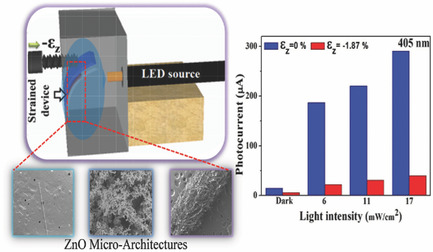
A flexible ZnO photodetector based on the unique microarchitectural influence (microwire, coral-like microstrip, and fibril-like clustered microwire) is demonstrated with the capability to detect broadband spectrum in the UV/visible range. The behavior of the electrical transport characteristics is determined through conceptual realization on the external strain induced piezo-phototronic effect for the development of next-generation optoelectronics.
Faster Electron Injection and More Active Sites for Efficient Photocatalytic H2 Evolution in g-C3N4/MoS2 Hybrid
- First Published: 26 January 2018
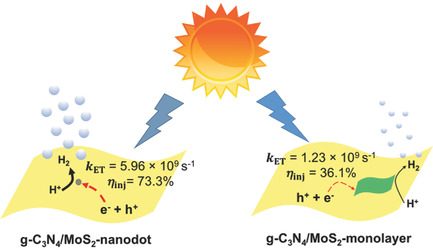
Charge transfer kinetics between g-C3N4 and two kinds of nanostructured MoS2 (nanodot and monolayer) cocatalyst were systematically investigated using single-particle photoluminescence and femtosecond time-resolved transient absorption spectroscopies. Faster and more efficient electron injection from g-C3N4 to MoS2 nanodots and more active sites in MoS2 nanodots were found, which induced a 7.9 times higher H2 evolution rate than g-C3N4/MoS2-monolayer hybrid.
Scalable Synthesis of Triple-Core–Shell Nanostructures of TiO2@MnO2@C for High Performance Supercapacitors Using Structure-Guided Combustion Waves
- First Published: 22 January 2018
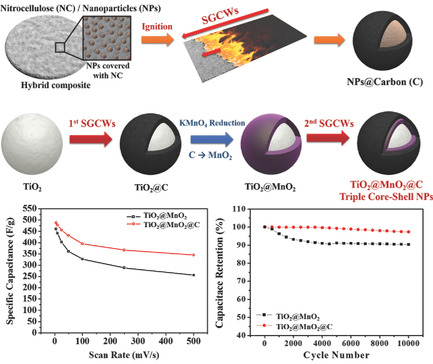
A scalable synthesis using structure-guided combustion waves enables the facile fabrication of multiple core-shell TiO2@MnO2@Carbon nanoparticles which originate from incomplete combustion inside chemical-fuel-wrapped nanostructures. TiO2@MnO2@Carbon-based electrodes exhibit a greater specific capacitance, and capacitance retention while the absences of MnO2 or carbon shells reveal severe degradation.
Synthesis and Photocatalytic Application of Stable Lead-Free Cs2AgBiBr6 Perovskite Nanocrystals
- First Published: 30 January 2018
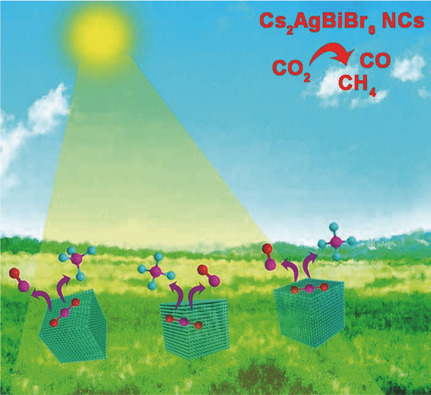
Stable lead-free Cs2AgBiBr6 double perovskite nanocrystals with a cubic shape and an average size of 9.5 nm are successfully synthesized via the hot-injection route, and are employed as photocatalysts to convert CO2 into solar fuels (CO and CH4). This work offers a reliable avenue for Cs2AgBiBr6 perovskite nanocrystals preparation, which holds a great potential in the further photochemical applications.
Sb Incorporation in Wurtzite and Zinc Blende InAs1−xSbx Branches on InAs Template Nanowires
- First Published: 29 January 2018
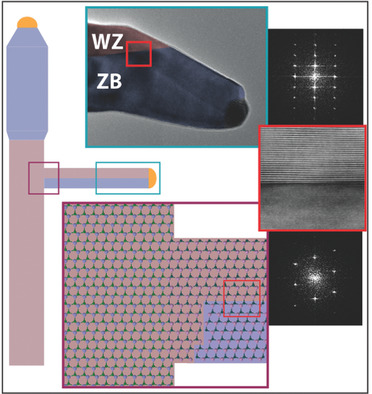
Through the branching technique, wurtzite InAsSb nanowire branches are achieved on wurtzite InAs with different Sb compositions. Zinc blende branched nanowires are grown simultaneously for comparison. Wurtzite branches (or branch segments) incorporate less Sb compared to their zinc blende counterparts, while the average sum of Sb of the different segments of wurtzite is similar to the Sb incorporation in zinc blende branches.
Photo-Reconfigurable Azopolymer Etch Mask: Photofluidization-Driven Reconfiguration and Edge Rectangularization
- First Published: 25 January 2018
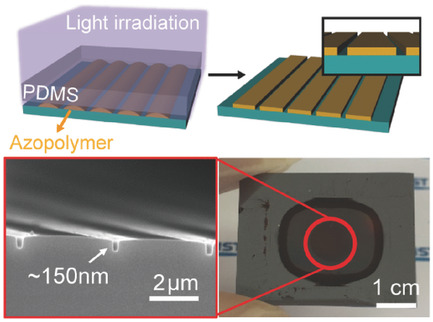
A photo-reconfigurable etch mask is presented that enables highly reliable and efficient structural manipulation of functional materials. At the center of this technology is the directional photofluidization of an azopolymer with the structural guidance of an elastomeric mold; the photo-reconfigured azopolymer arrays undergo a rectangularization process. Diverse structural features of silicon patterns, as a proof of the concept, are successfully demonstrated.
Imparting Designer Biorecognition Functionality to Metal–Organic Frameworks by a DNA-Mediated Surface Engineering Strategy
- First Published: 16 February 2018




